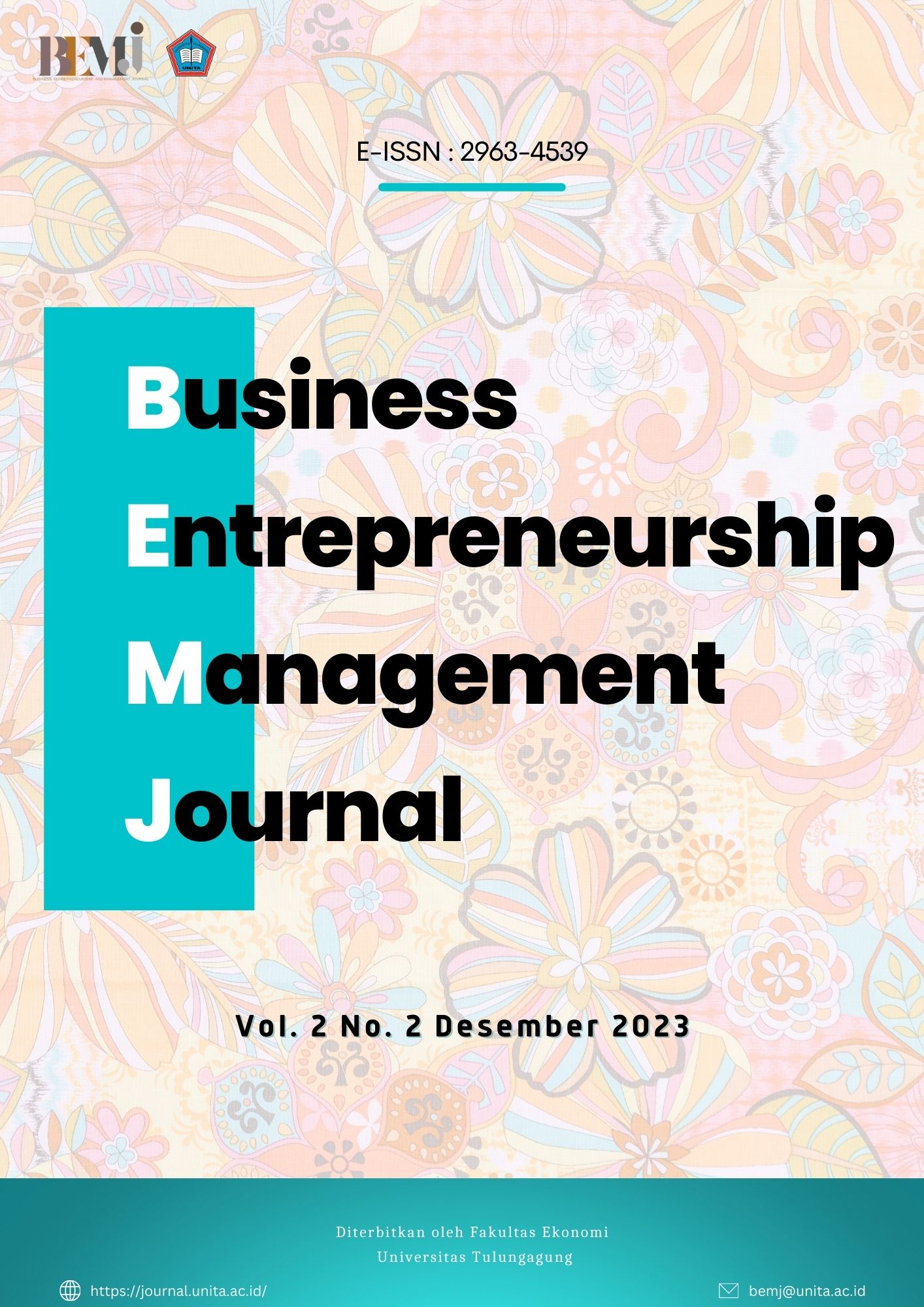PENGARUH KOMUNIKASI DAN MOTIVASI TERHADAP KINERJA KARYAWAN DENGAN KEPUASAN KERJA SEBAGAI VARIABEL INTERVENING
DOI:
https://doi.org/10.36563/bemj.v2i2.856Keywords:
Communication, Motivation, Job Satisfaction, Performance, ScaffoldingAbstract
This study aims to determine the direct effect of communication and motivation on employee performance as well as the indirect effect through job satisfaction used a causal associative method in quantitative approach. There were 40 samples collected. The data collection techniques used library research and field research, which then analysed through instrument testing, classical assumption testing, multiple regression analysis using path analysis, and goodness of fit testing. The variables used are communication (X1) and motivation (X2) as independent variables, while the dependent variable is employee performance (Y) and job satisfaction (Z) as intermediary or intervening variables.The results of this study are communication has a significant effect on employee performance, motivation has a significant effect on employee performance, communication has a significant effect on job satisfaction, motivation has a significant effect on job satisfaction, communication through job satisfaction has no significant effect on employee performance, and motivation through job satisfaction has no effect significant to employee performance.
Downloads
References
Yogyakarta: Center for Academik Publishing Service.
Nurudin. (2016). Ilmu Komunikasi. Jakarta: Rajawali Pers.
Sinambela, Lijan Poltak. (2012). Kinerja Pegawai Teori, Pengukuran dan Implikasi, Yogyakarta: Graha Ilmu
Sugiarto. (2017). Metodologi Penelitian Bisnis.Yogyakarta: Andi
Sugiyono, (2020). Metode Penelitian : Kuantitatif, Kualitatif dan RD, Alfabeta, Bandung.
Sutarto, Wijono. (2020). Psikologi Industry dan Organisasi: Dalam satu bidang gerak psikologi sumber daya manusia. Jakarta: Kencana Prenatal Media Group.
Sutrisno, Edy. (2016). Manajemen Sumber Daya Manusia. Jakarta: Kencana Predana Media Group.
Wibowo. (2014). Perilaku Dalam Organisasi. Edisi Kedua. PT. Raja Grafindo Persada: Jakarta Dharma.
Rahmawati, dkk. (2022). Optimalisasi Loyalitas, Semangat, Dan Disiplin Kerja Dalam Upaya Meningkatkan Produktivitas Karyawan. Article Business, Entrepreneurship, and Management Journal Vol. 1(1), 34-41. https://journal.unita.ac.id/index.php/bemj/article/view/576
Rahmayani & Nuridin. (2022). Pengaruh Komunikasi Dan Motivasi Terhadap Kinerja Pegawai Kantor Kecamatan KP. Makassar Jaktim. Journal Business Management Krisnadwipayana. Vol.10(3), 590-602.
https://ojs.ekonomi-unkris.ac.id/index.php/JMBK/article/view/794/pdf
Rubiani & Mayesti. (2022). Pengaruh Motivasi Dan Komunikasi Terhadap Kinerja Karyawan Pada PT. Valco Indoasiatec. Journal Economic Business. Vol.5(2). 711-721.
https://www.researchgate.net/publication/366179368_Pengaruh_Motivasi_dan_ Komunikasi_Terhadap_Kinerja_Karyawan_Pada_PT_Valco_Indoasiatec
Suwandi & Mandahuri. (2021). Pengaruh Kompensasi Terhadap Kinerja Karyawan yang di Mediasi Kepuasan Kerja pada PT ISS Cikarang. Jurnal Ekonomi dan Ekonomi Syariah. Vol.4(1). 238-241. https://www.researchgate.net/publication/348204258_Pengaruh_Kompensasi_T erhadap_Kinerja_Karyawan_yang_di_Mediasi_Kepuasan_Kerja_pada_PT_ISS_ Cikarang
Downloads
Published
Issue
Section
License
Authors who publish with this journal agree to the following terms:
- Copyright on any article is retained by the author(s).
- The author grants the journal, right of first publication with the work simultaneously licensed under a Creative Commons Attribution License that allows others to share the work with an acknowledgment of the work’s authorship and initial publication in this journal.
- Authors are able to enter into separate, additional contractual arrangements for the non-exclusive distribution of the journal’s published version of the work (e.g., post it to an institutional repository or publish it in a book), with an acknowledgment of its initial publication in this journal.
- Authors are permitted and encouraged to post their work online (e.g., in institutional repositories or on their website) prior to and during the submission process, as it can lead to productive exchanges, as well as earlier and greater citation of published work.
- The article and any associated published material is distributed under the Creative Commons Attribution-ShareAlike 4.0 International License
Deprecated: json_decode(): Passing null to parameter #1 ($json) of type string is deprecated in /home/journal.unita.ac.id/public_html/plugins/generic/citations/CitationsPlugin.php on line 68


_(1).png)



